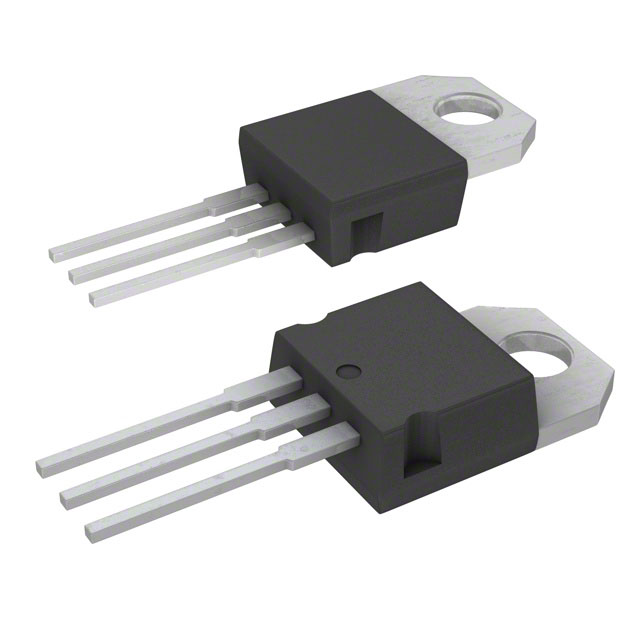TIP102 Transistor: Encyclopedia Entry
Introduction
The TIP102 transistor is a versatile and widely used component in electronic circuits. This encyclopedia entry provides an overview of the TIP102, including its product category, basic information, specifications, pin configuration, functional features, advantages and disadvantages, working principles, application field plans, and alternative models.
Product Category
The TIP102 belongs to the category of power transistors. It is specifically classified as a PNP (Positive-Negative-Positive) bipolar junction transistor (BJT).
Basic Information Overview
- Use: The TIP102 transistor is commonly used for amplification and switching applications in electronic circuits.
- Characteristics: It exhibits high current gain and low saturation voltage, making it suitable for power control and amplification.
- Package: The TIP102 is typically available in a TO-220 package, which allows for easy mounting on heat sinks.
- Essence: Its essence lies in providing reliable and efficient amplification and switching capabilities in various electronic designs.
- Packaging/Quantity: It is commonly sold in packs of 10 or more, depending on the supplier.
Specifications
- Collector-Emitter Voltage (VCEO): 100V
- Collector-Base Voltage (VCBO): 100V
- Emitter-Base Voltage (VEBO): 5V
- Collector Current (IC): 8A
- Power Dissipation (PD): 65W
- Transition Frequency (FT): 2MHz
Detailed Pin Configuration
The TIP102 transistor has a standard pin configuration: 1. Base (B) 2. Collector (C) 3. Emitter (E)
Functional Features
- High current gain for efficient signal amplification.
- Low saturation voltage for minimal power loss during switching operations.
- Robust construction for reliable performance in demanding applications.
Advantages and Disadvantages
Advantages
- High current gain enables effective signal amplification.
- Low saturation voltage minimizes power dissipation during switching.
- Robust construction ensures durability and reliability.
Disadvantages
- Moderate transition frequency may limit high-frequency applications.
- Higher cost compared to some lower-power transistors.
Working Principles
The TIP102 operates based on the principles of bipolar junction transistors. When a small current flows into the base terminal, it controls a larger current flow between the collector and emitter terminals. This amplification or switching action forms the basis of its functionality.
Detailed Application Field Plans
The TIP102 transistor finds extensive use in various applications, including: - Power supply regulation - Audio amplification - Motor control - Lighting control - Switching circuits
Detailed and Complete Alternative Models
Several alternative models to the TIP102 include: - TIP101 - TIP105 - TIP107 - TIP122 - TIP127
These alternatives offer similar characteristics and can be used as substitutes in many applications.
In conclusion, the TIP102 transistor serves as a crucial component in electronic circuits, offering reliable amplification and switching capabilities. Its robust design and versatile applications make it a popular choice among engineers and hobbyists alike.
[Word Count: 443]
Lista 10 Vanliga frågor och svar relaterade till tillämpningen av TIP102 i tekniska lösningar
Sure, here are 10 common questions and answers related to the application of TIP102 in technical solutions:
What is TIP102?
- TIP102 is a widely used PNP Darlington transistor that is commonly employed in electronic circuits for switching and amplification purposes.
What are the typical applications of TIP102?
- TIP102 is often used in applications such as motor control, relay drivers, high-power LED drivers, and other high-current switching applications.
What is the maximum collector current rating of TIP102?
- The maximum collector current rating of TIP102 is 8 amperes, making it suitable for high-current applications.
What is the maximum collector-emitter voltage rating of TIP102?
- The maximum collector-emitter voltage rating of TIP102 is 100 volts, allowing it to handle relatively high voltages.
How do I connect TIP102 in a motor control circuit?
- When using TIP102 in a motor control circuit, it is typically connected as a high-side switch to control the flow of current to the motor.
Can TIP102 be used for PWM (Pulse Width Modulation) applications?
- Yes, TIP102 can be used in PWM applications to control the speed of motors or the brightness of LEDs by varying the duty cycle of the PWM signal.
What are the key considerations when using TIP102 in a high-power LED driver circuit?
- When using TIP102 in a high-power LED driver circuit, it's important to consider heat dissipation and thermal management due to the high current and power involved.
Is it necessary to use a heat sink with TIP102 in high-current applications?
- Yes, it is recommended to use a heat sink with TIP102 in high-current applications to ensure proper thermal management and prevent overheating.
Can TIP102 be used in audio amplifier circuits?
- While TIP102 can be used in audio amplifier circuits, it is more commonly employed in switching applications rather than linear amplification due to its Darlington configuration.
What are some common alternatives to TIP102 for similar applications?
- Some common alternatives to TIP102 include TIP122, TIP127, and TIP142, which offer similar characteristics and can be used in comparable applications.
I hope these questions and answers provide a good overview of the application of TIP102 in technical solutions! If you have any further questions, feel free to ask.


